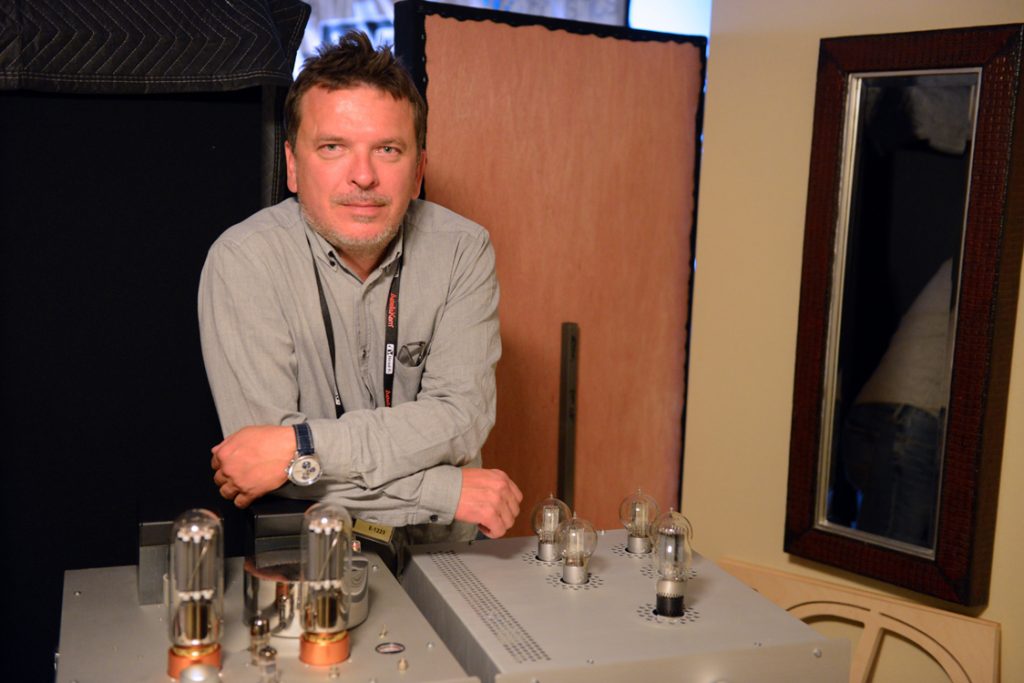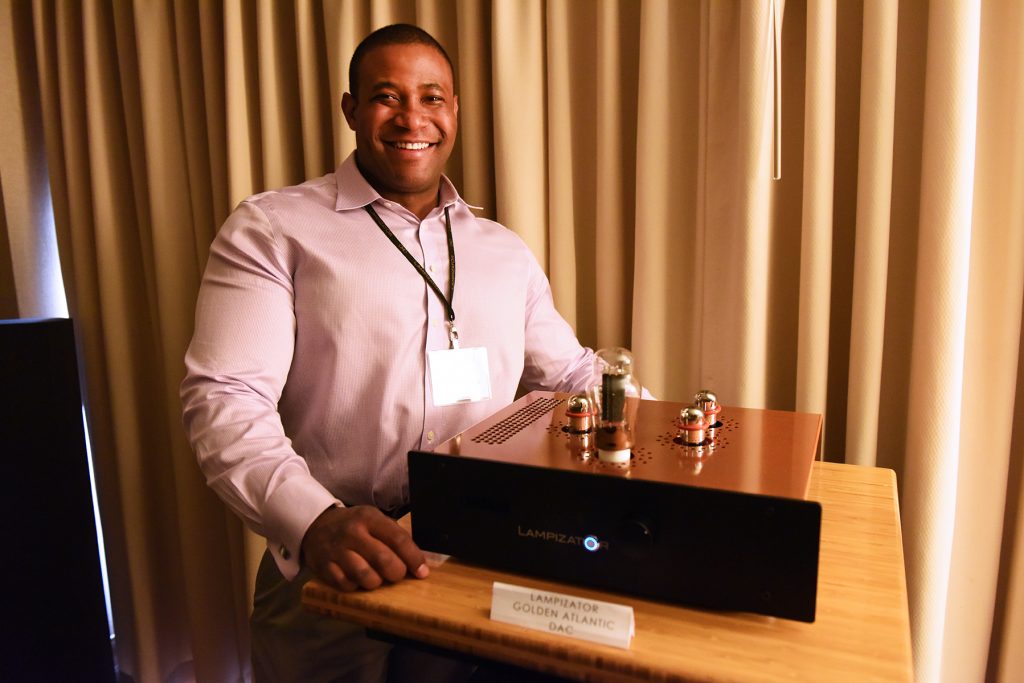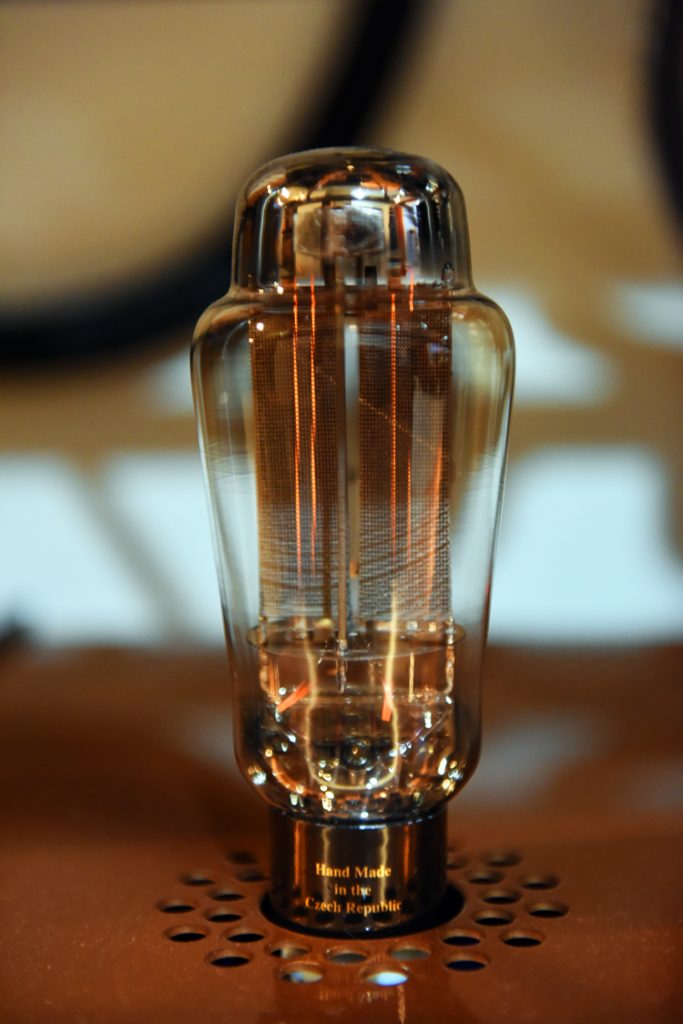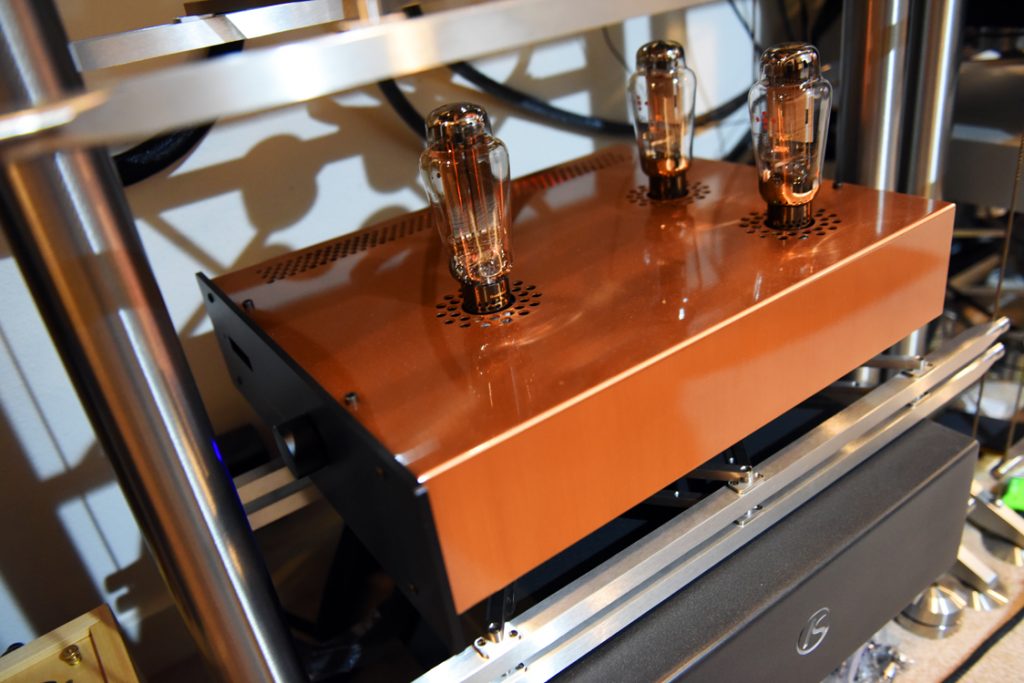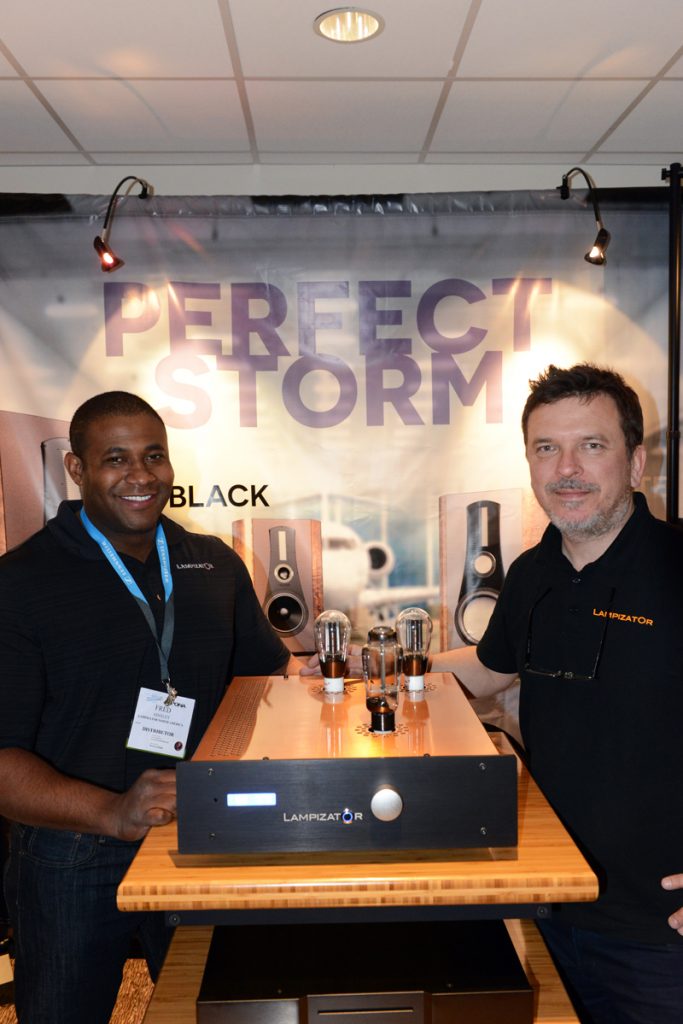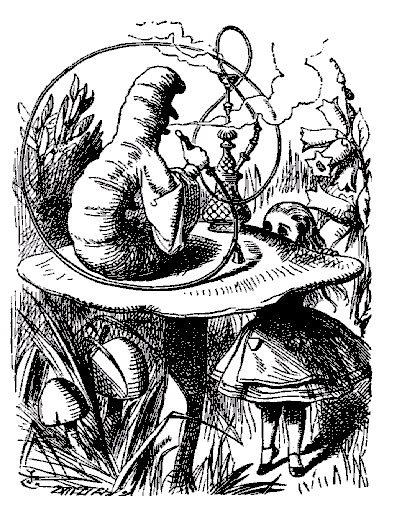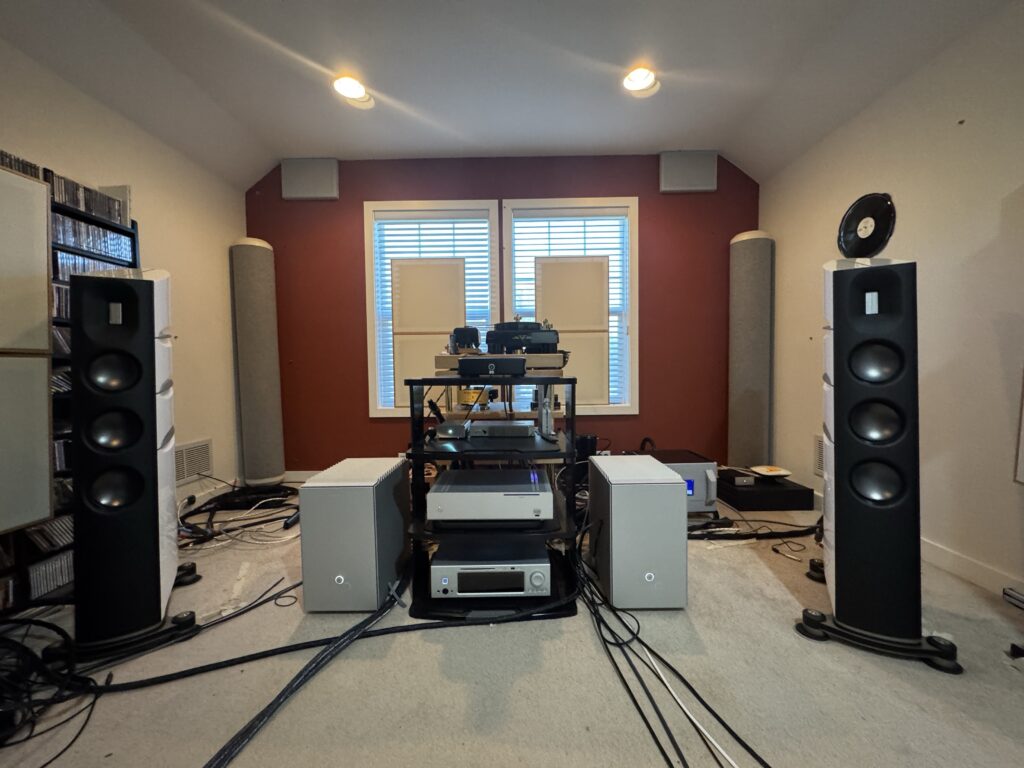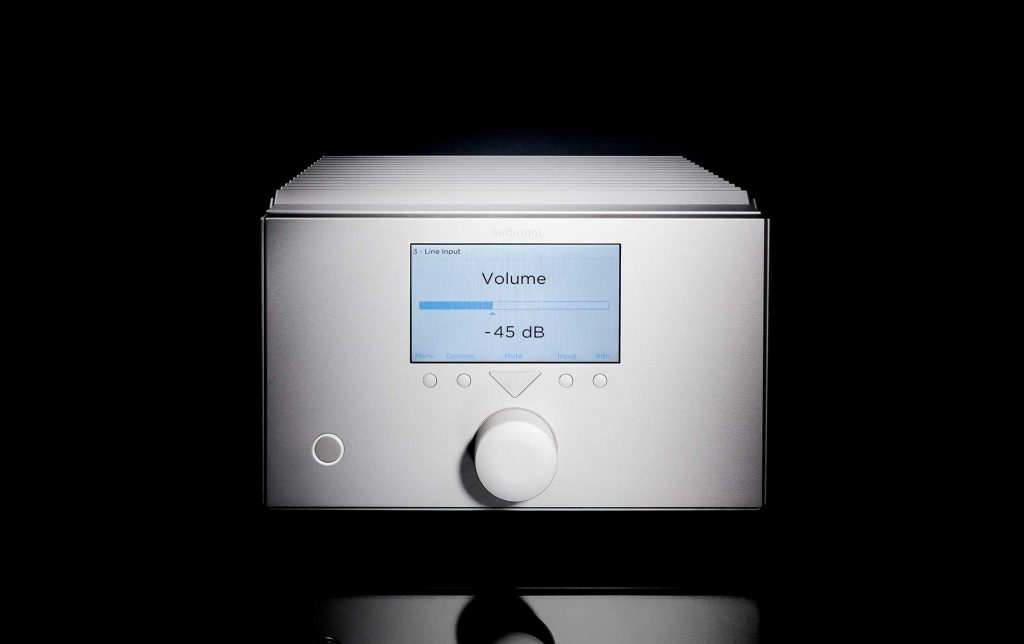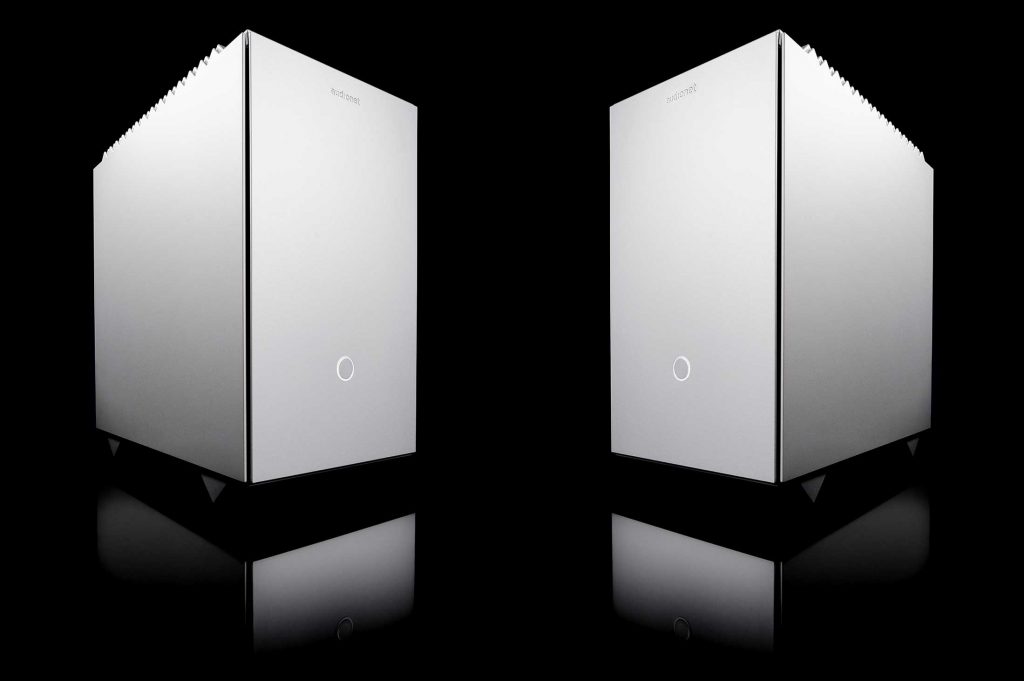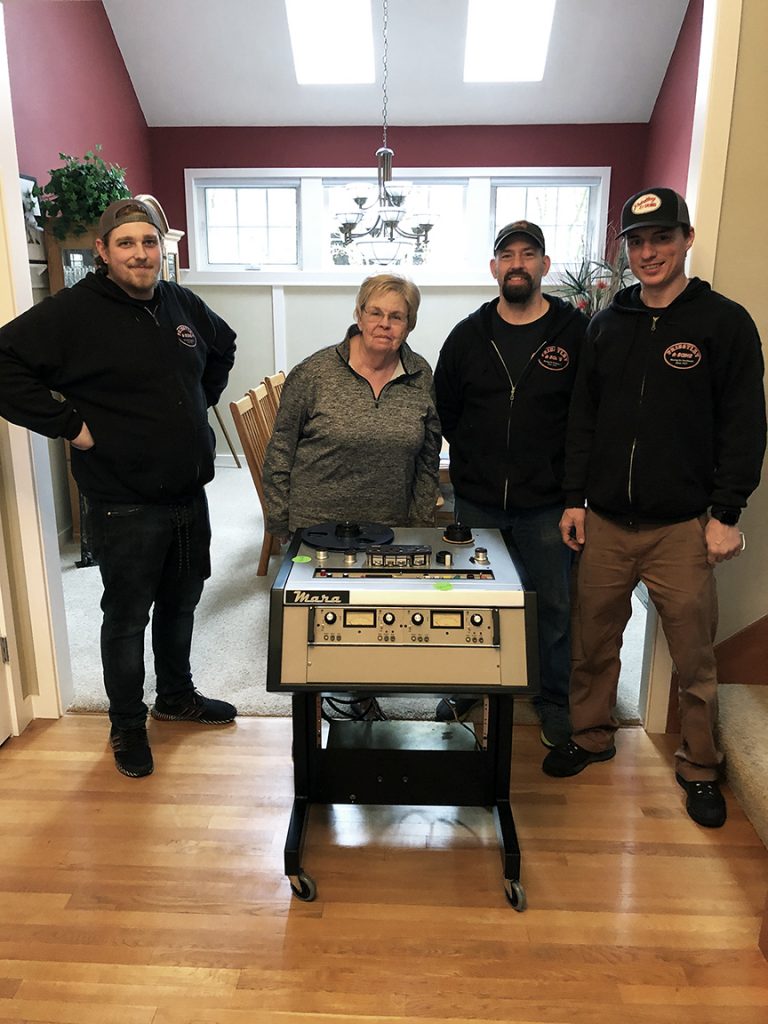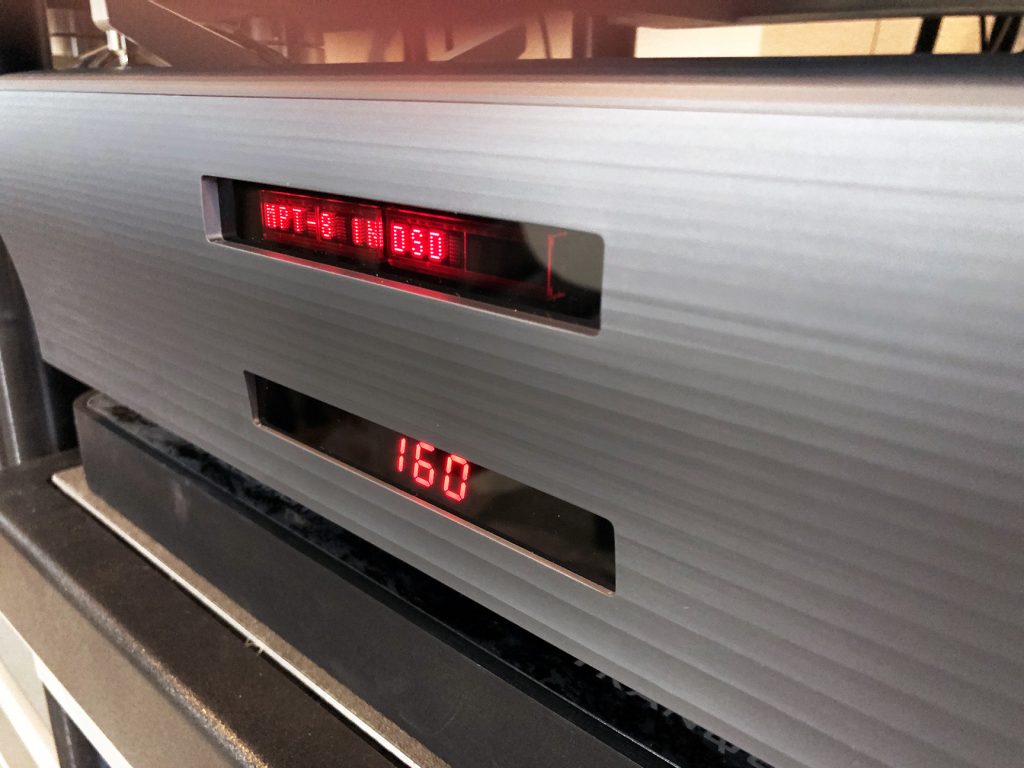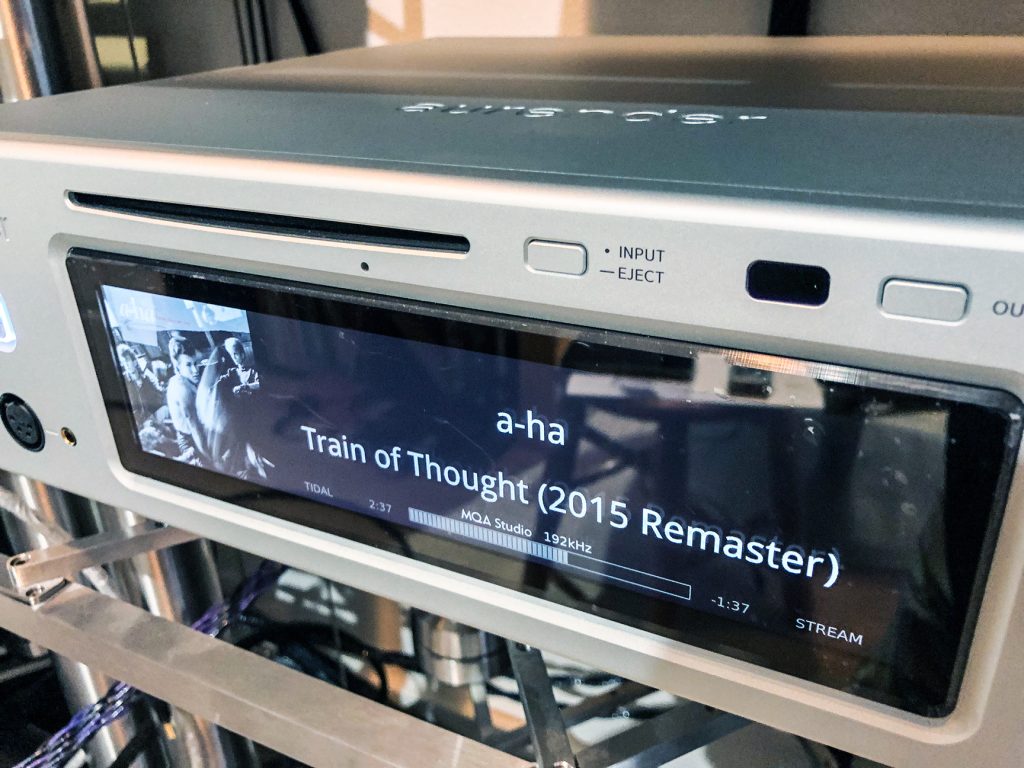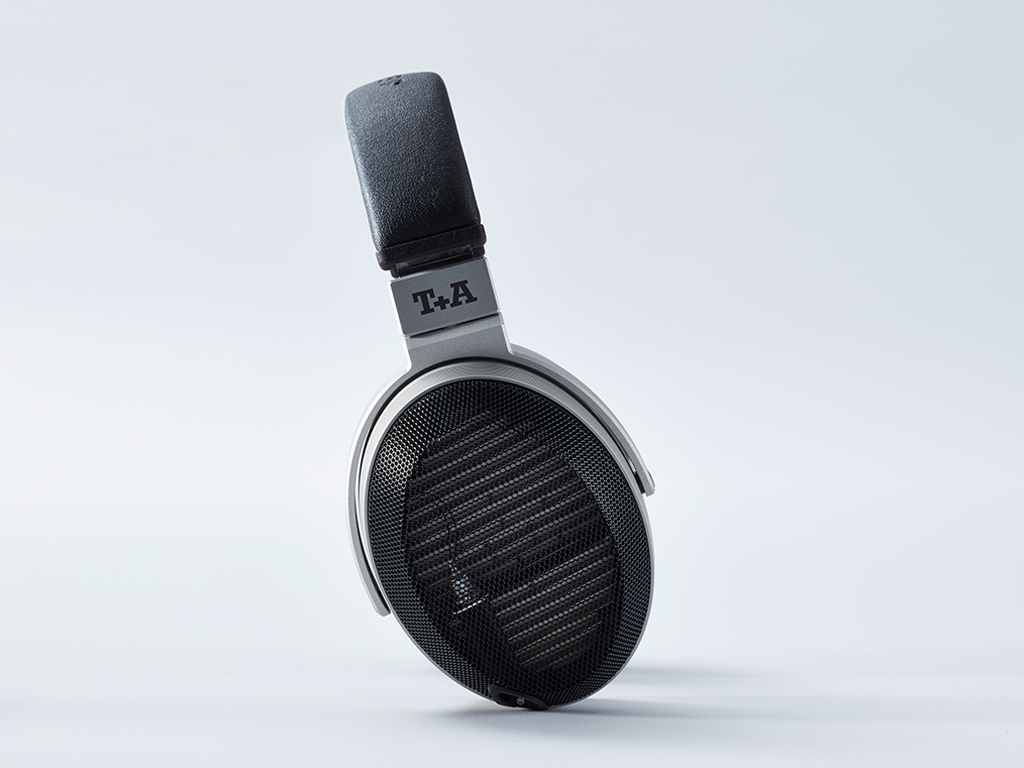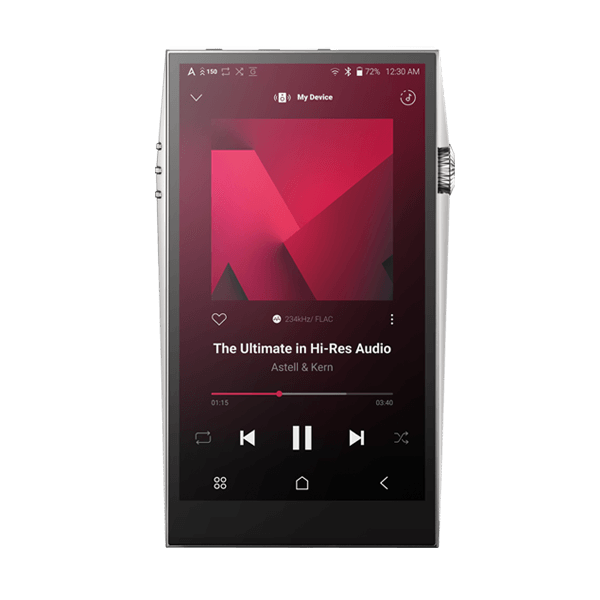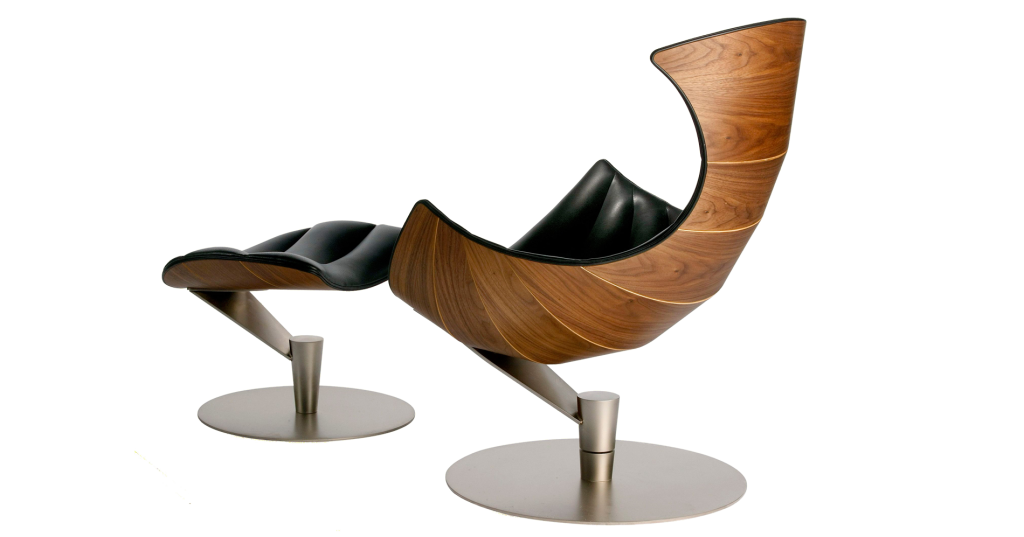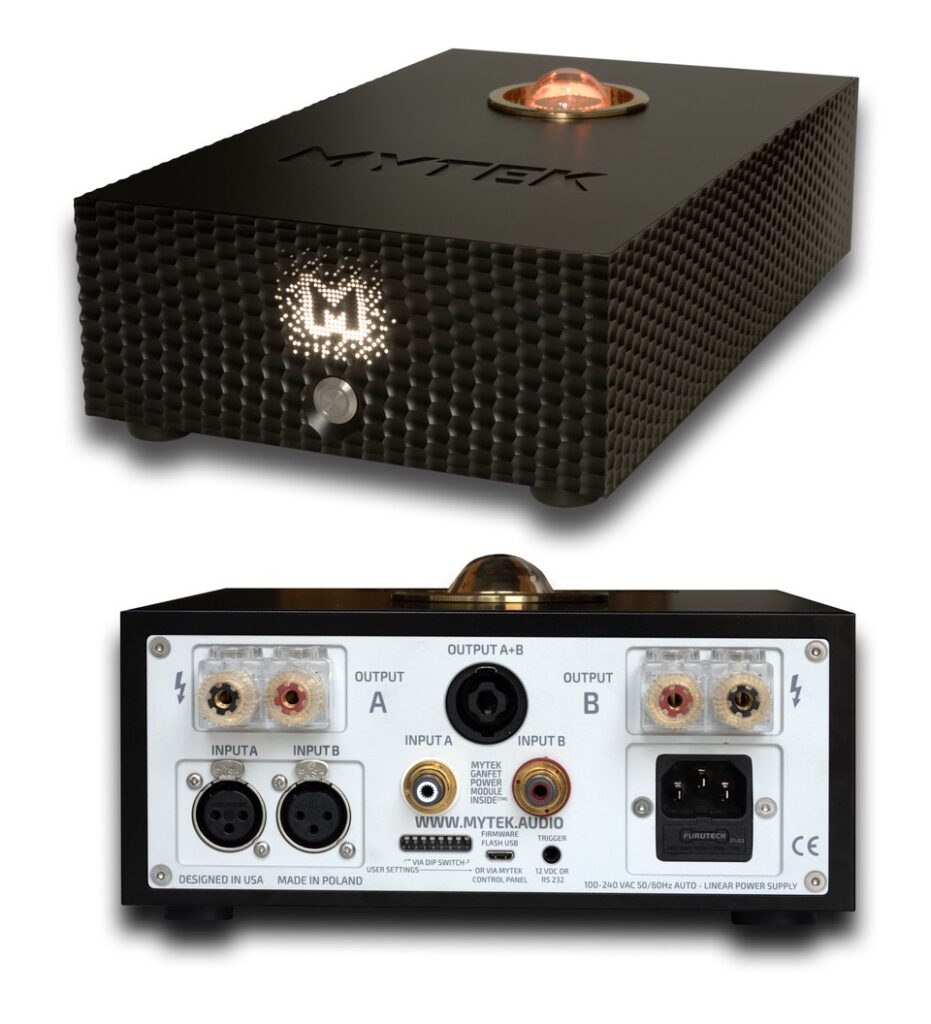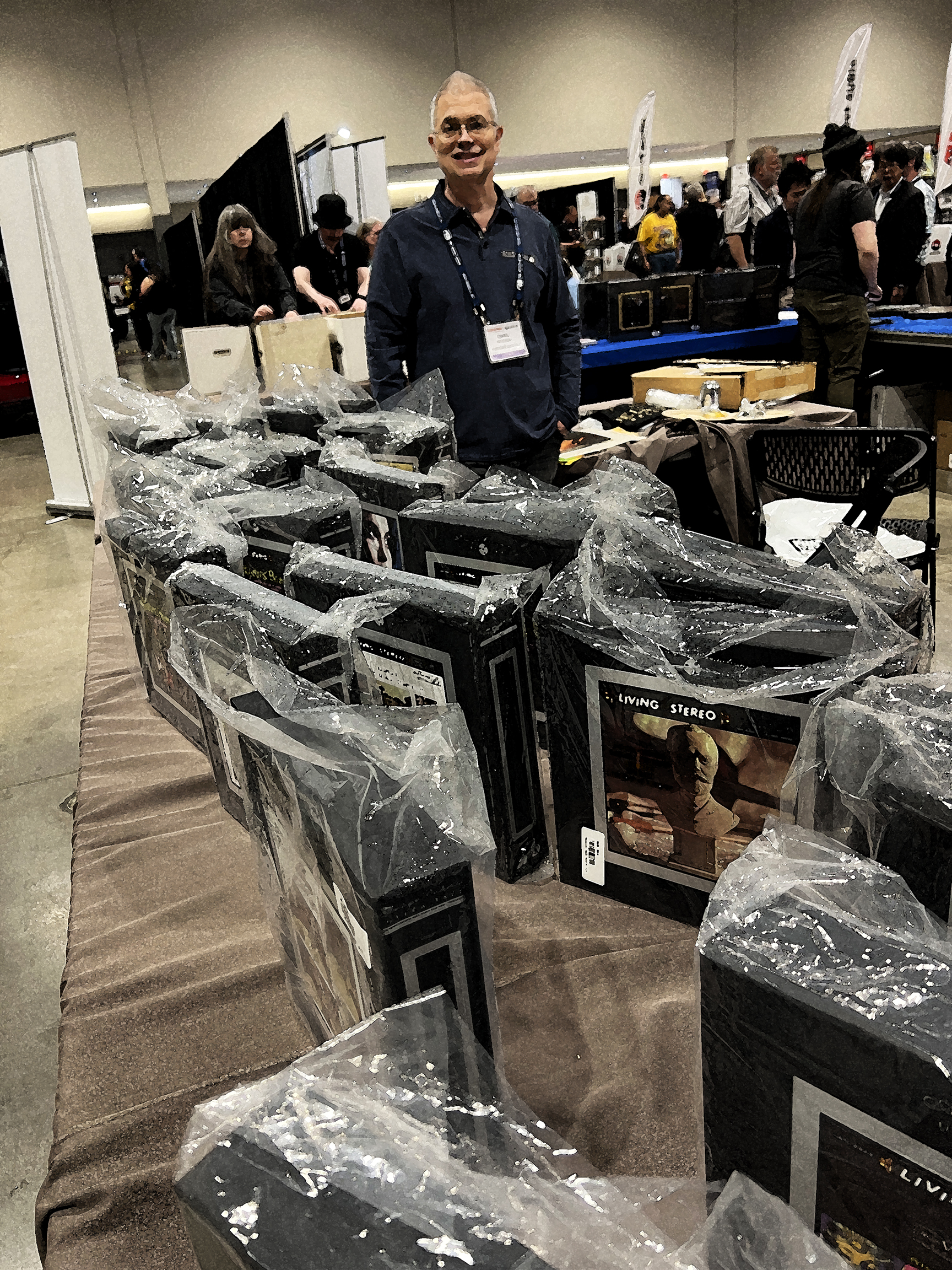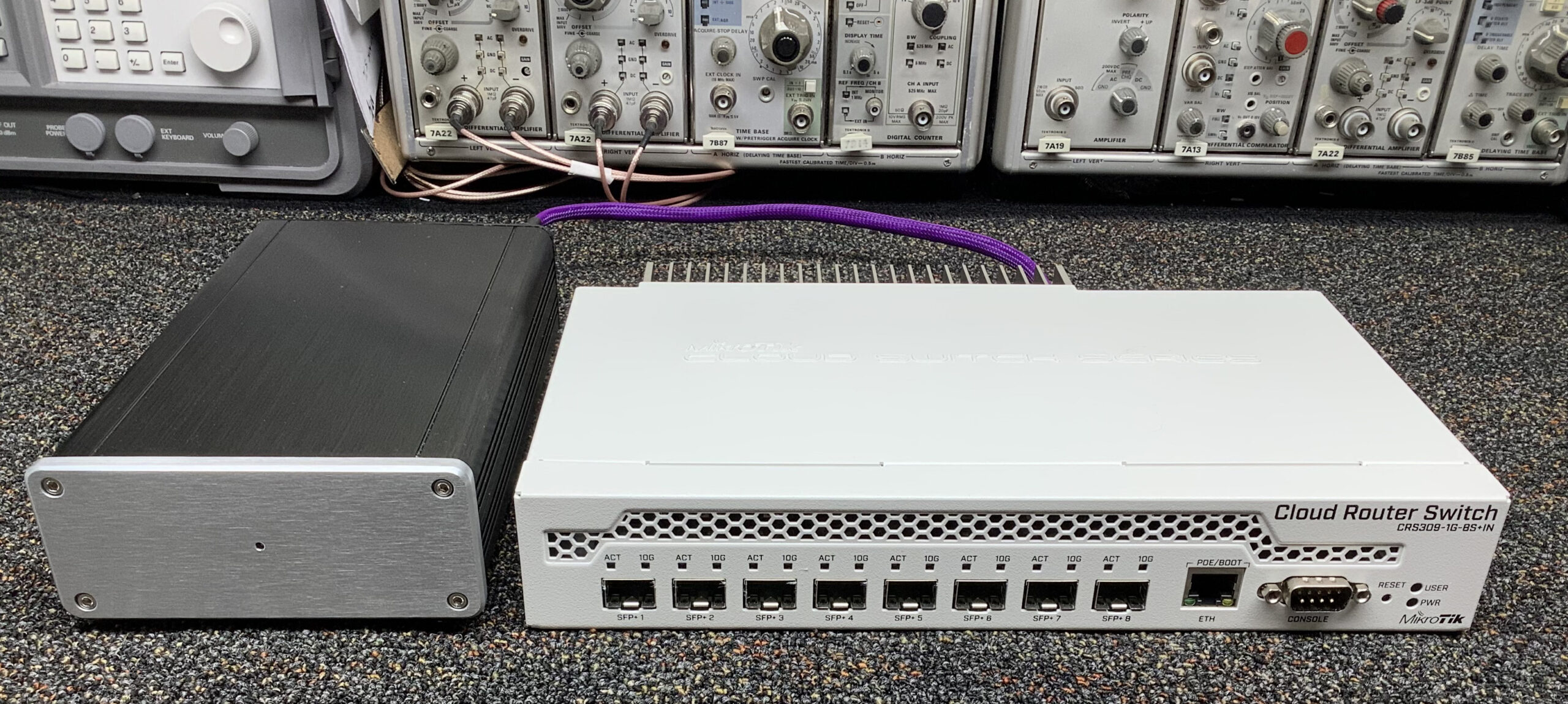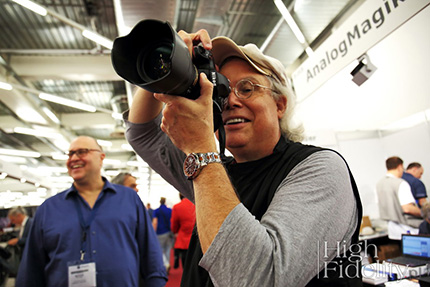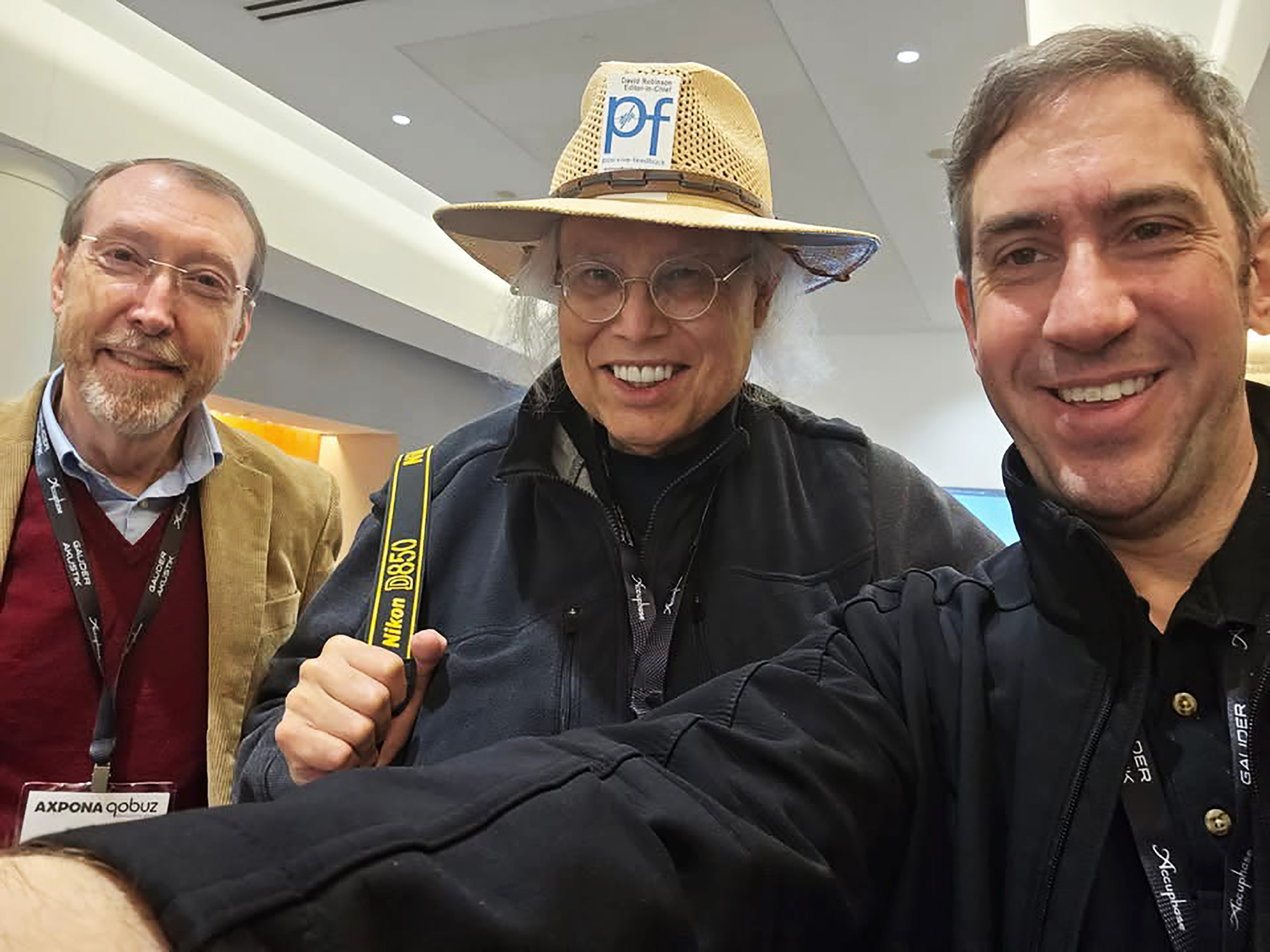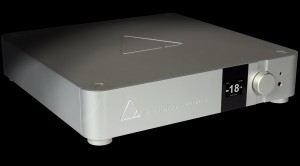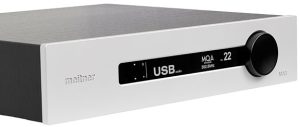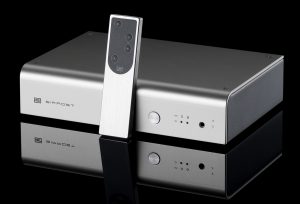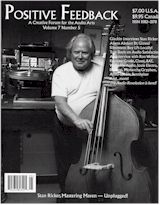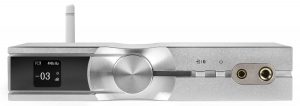Ye Olde Editor, in medias res… (photograph by John Robinson)
No, this is not a major review. It is more of a retrospective and reflection on what I've heard in the upgrade of our LampizatOr Golden Gate DSD DAC from its original design to its new Golden Gate 2 version. As it turns out, that upgrade wasn't merely cosmetic; it was a complete and significant rethinking and redesign of the GG DAC.
This is a summary of the improvements as I've heard them here. They are supplied in the hope that our readers will benefit from my thoughts.
Yes, I do love DSD and its possibilities for the audio arts. I have since September of 1998, when I first heard it demonstrated to Scott Frankland and I as representatives of Positive Feedback back in its print days, all the way back then (reprinted online HERE). It is a real advance in fine audio, and is worthy of ongoing support by the audiophile and music-loving community worldwide, without any reasonable doubt.
Over the years since DSD was decoupled from optical delivery and its proprietary standard (SACD), DSD has advanced significantly. No longer restricted to its optical straightjacket, and allowed to run free as an open standard, we have seen its 2.8224 mHz (Single DSD, or DSD64) initial sampling rate double to 5.6448 mHz (Double DSD, or DSD128) and even 11.2896 mHz (Quad DSD, or DSD256). Each step forward presented its own challenges, but once met, has brought substantial gains in the quality of audio reproduction for the listener. Over the years since then, literally hundreds of DACs are in production that support DSD at its various rates. The latest count is 563, in fact; see the master list of DSD DACs HERE. Some are Single only; some Single/Double; and many support all the way through Quad DSD. There are even a few adventurous companies that are taking advantage of the fact that there are chips that support all the way out to 22.5792 mHz (Octo DSD, or DSD512), even though there are no transfers or recordings available…yet…so far as I'm aware. (This last rate can be used quite nicely for upsampling lower-rate DSD or any rate of PCM up to Octo DSD, however, by stellar units like the Sound Galleries SGM2015, due itself to be updated very soon now.)
And with a handful of very fine companies supporting DSD downloads (NativeDSD.com, High Definition Tape Transfers, Acoustic Sounds' Superhirez.com, Blue Coast Records, Opus3 Records, 2L, and HDTracks, for example), there are a number of alternatives available for those wishing to feed their passion for DSD and fine music.
So DSD has long-since hit critical mass with the audiophile community, with album prices generally running from $20-$30 or so, and at DSD DAC price points all the way down to a couple of hundred bucks. This means that it's affordable to all but the most broke, or the truly penurious.
Meanwhile, my focus has been on some of the finest true reference-grade DSD DACs. One of the companies that caught my attention early on, due to the radical ideas of its designer, Lukasz Fikas, was LampizatOr.
Lukasz Fikus, the audio design genius behind the work at LampizatOr
Lukasz's original Golden Gate was startling enough in its conception: A state-of-the-art SET Quad-DSD-capable tubed DAC, with exceptional components throughout, and an eye-catching copper-wrapped chassis. It was available in two configurations: balanced (five tubes) and unbalanced (three tubes). Completely separate DSD and PCM D/A handling, manually switchable by the user, and a volume control.
I was intrigued, and followed up with LampizatOr for a review sample. (So was Bill Malcolm; he reviewed the unbalanced LampizatOr Golden Gate back in Issue 82 which can be read HERE) They sent me the unbalanced version, outfitted with three seductive MESH 45 SETs.
My listening with the original GG over time confirmed my early listening impressions. The sound was rich, seductively warm, quite "golden," with great lushness and pleasant musicality…almost a traditionally SET DHT sort of presentation. It was just the sort of sonic presentation that a person in love with SET would dig deeply, and yet with noticeable detail when it came to the best of direct-to-DSD or excellent tape transfers to DSD. Quad was always best, to my ear; its superior resolution helped to bring more out of the 45's capabilities.
While I recognized the warmer presentation for what it was, I was nevertheless taken with the original GG…it had magic, and a lush charm that I esteemed. I therefore gave it one of my Brutus Awards at the end of 2015, in Issue 82. (HERE)
Fred Ainsley of LampizatOr North America
In early 2017, Fred Ainsley of LampizatOr North America, got in touch with me about the fact that LampizatOr had improved the GG quite substantially, to a new version dubbed the "Golden Gate 2." Would I be interested in having my unit done up?
I checked it out at the Lampi Web site:
Improvements to the Golden Gate 2, over the original Golden Gate
"The LampizatOr Golden Gate 2 DAC represents the next generation of our universally praised Golden Gate DAC. This DAC expands upon the already over the top Golden Gate execution to add very meaningful upgrades including:
- Redesigned PCM Engine
- DSD 512 (8xDSD) Support
- Auto-switching between formats
- A revised power supply scheme
- Revised tube heating scheme
- Much improved volume control implementation
- Custom boutique footers from STACORE
- Proprietary AC filtration circuit
- Revised grounding scheme
- And much, much more."
Leaving aside the marketing hype-like "And much, much more," this is a list that impressed me by the completeness of the revision of the Golden Gate to the Golden Gate 2. In fact, it appeared that Lukasz Fikas, the audio genius behind the GG2 had decided on fundamental and radical improvements to his original DAC.
Was I interested? Oh, hell yes!
It did take several months to get our Golden Gate queued up, shipped back to Poland, upgraded (which took weeks), and then shipped back here.
But it didn't take much time to hear the huge difference between the original GG and the GG2. I actually wrote about the improvements rather substantially last December in my section on the GG2 in my 2017 Brutus Awards. I'll claim the right to quote myself:
But this year LampizatOr's US distributor, Fred Ainsley, informed me that there was a serious upgrade to the Golden Gate, one that would completely recast the performance and voicing of the Golden Gate. As a matter of fact, Lukasz referred to this upgrade as a major new version, one that they call "Golden Gate 2."
The LampizatOr Web site summarizes the changes as follows:
The LampizatOr Golden Gate 2 DAC represents the next generation of our universally praised Golden Gate DAC. This DAC expands upon the already over the top Golden Gate execution to add very meaningful upgrades including:
- Redesigned PCM Engine
- DSD 512 (8xDSD) Support
- Auto-switching between formats
- A revised power supply scheme
- Revised tube heating scheme
- Much improved volume control implementation
- Custom boutique footers from STACORE
- Proprietary AC filtration circuit
- Revised grounding scheme
- And much, much more.
…Especially intriguing was the movement up to support for 8x DSD (DSD512), and the auto-switching between DSD and PCM formats. Support for 8x DSD meant that I would be able to use the GG2 with another 2017 Brutus Award winner, the stellar Sound Galleries SGM2015, which handles up to 8x DSD in its output. (This is something that I would like to try in 2018.)
Note that I am still waiting for this possibility; Sound Galleries has not yet gotten to me the Mk II version of their spectacular SGM2015 Music Server. Until that comes, I'll have to hold off commenting on the Octo DSD capabilities of the GG2. (Edward? Are you listening?)
My original Golden Gate DSD DAC in our Stillpoints ESS Rack #1
Continuing with my notes from last December:
After about a week of warmup, I began to listen carefully. The GG2 was placed on a Walker Audio Prologue Stand with Valid Points Isolation Feet. The rest of the system included a Furutech 303 Daytona Line Conditioner and Power Distribution Unit; a PASS Labs INT-250 integrated amp; Beethoven power cables, interconnects, and speaker cables by Skogrand; and Evolution Acoustics MMMicro One Monitor Speakers on Wave Kinetics A10-U8 Isolation Feet.
Over a number of weeks, I used a number of well-known Single, Double, and Quad DSD recordings from dozens of different labels. These were mainly sourced from NativeDSD.com, SuperHirez.com, High Definition Tape Transfers, Blue Coast Records, Opus3 Records DSD site, and 2L. Other DSD sources include tape transfers and transfers from LP; most of these are either Double DSD or Quad DSD.
The results were very clear right after the warm-up: The LampizatOr Golden Gate 2 was no longer what it had been in version 1. At all. It went from having a rather warm sonic signature, to achieving a remarkable tonal neutrality. Transparency was significantly enhanced, as were playback dynamics. I noticed that the noise floor was lower, and detail was rendered with great clarity. All of this has contributed to better soundstaging and imaging, consequently.
No doubt about it: the LampizatOr Golden Gate 2 is better in every way than the earlier Golden Gate, with support for 8x DSD that allows it to work with state-of-the-art music servers like the Sound Galleries SGM2015. It shows that outside-of-the-box design and engineering plus exceptional tubes can shatter all the old stereotypes about tube-based DACs.
I therefore give it a 2017 Brutus Award and "Ye Olde Editor's Very Highest Recommendation!" with cheers, salsa, margaritas, and mescal!
Fred Ainsley of LampizatOr North America and Lukasz Fikus of LampizatOr Poland
My December impressions listed above were a summary of what I had already shared with Fred Ainsley of LampizatOr North America over three months earlier, back in August 2017:
"Well, Lukasz and Fred, having gotten the new GG into place, I have to say that I am extremely impressed so far!
Operationally, the new GG set up like a dream. I had to reset the switches on the back for 45/101 operation…I always check that after shipping. We're using all Skogrand Beethoven reference cabling (power, USB, RCA, and speaker cables) and Furutech AC Line Conditioning/Power Distribution w/Furutech power cable there. AC receptacle is Furutech NCF…very fine. The GG is resting on a Walker Audio Proscenium Isolation Platform. (I'll be adding Walker Audio Valid Points Feet and Pods in a bit, after thing shake down further.) The feed is going to the PASS Labs i250 Integrated Amplifier, and thence via Skogrand Beethoven speaker cables to a pair of Evolution Acoustics MM Micro One loudspeakers on Wave Kinetics Isolation Feet. I'm listening in near-field mode, equilateral triangle placement…the "Cardas configuration."
Then I downloaded the latest driver set on the LampizatOr site, uninstalled the old Amanero driver set, installed the new, and then plugged in the USB. The GG came up instantly…as it should be!
We are listening with the latest version of JRiver's Media Center 22, with the GG volume set to 0dB (unity gain).
The unit tests out to Quad DSD without a problem…am listening to Fiona Joy's Into the Mist, solo piano, recorded in Quad DSD right now, in fact. And no more DSD vs. PCM switching! That's really handy.
We're still getting hours on it, and I want it to have more hours on it, but I must say already that the new GG is noticeably better than the older version. Transparency is improved, even with the same 45 tubes. Detail is better at all levels, and there is a better sense of flow. And yet musicality is also richer, more organic, more soulful…there is no loss due to the trade-off of one set of audio virtues against another!"
Real progress, of a certainty.
Conclusion
And now here, another eight months later, I can say that all of my impressions have been confirmed over time. In one area, that of lesser golden warmth…a definite shift towards the neutral zone…the LampizatOr Golden Gate 2 has demonstrated convincingly that a DHT SET Tubed unbalanced DSD DAC is quite capable of great detail and transparency, while maintaining great musicality. It's another example of the old stereotype of "tubed" vs. "solid-state" being very nearly worthless in our time.
We still don't know what chipset Lukasz is using…he keeps that close to his vest, stating that obsessions about chipsets are a waste of time…but given the results, I won't argue with his stance.
So I'll conclude this reflection by saying that we have confirmed over time that the Golden Gate 2 is quite superior to its predecessor, and well worth the price of the upgrade, especially to those who love SET without wishing to compromise transparency and detail. The GG2 excels in performance, and is sweet in operation. It's a real step forward.
I shouldn't close without noting that there is immense great news from LampizatOr. Lukasz Fikus and his team decided to see if they could outdo even the Golden Gate 2, going literally no-holds-barred in their next generation of tubed DSD DACs. The result is their mighty Pacific DSD DAC, which is stunning to both the eye and the ear. Revolutionary, for sure.
I am working with LampizatOr to see if we can bring a Pacific DSD DAC here for evaluation in the second half of 2018…ideally with the Sound Galleries SGM2015 Mk II Music Server…so you'll want to stay tuned….
Golden Gate 2 DSD DAC Price: Starting at around USD $17,995 at press time (exchange rates fluctuate, of course), or Euro 15,000
LampizatOr in North America
Contact: Fred Ainsley
LampizatOr in Poland
All photographs and image processing by David W. Robinson, unless otherwise noted. Classic cartoons from Alice in Wonderland are by John Tenniel, and are in the public domain.






